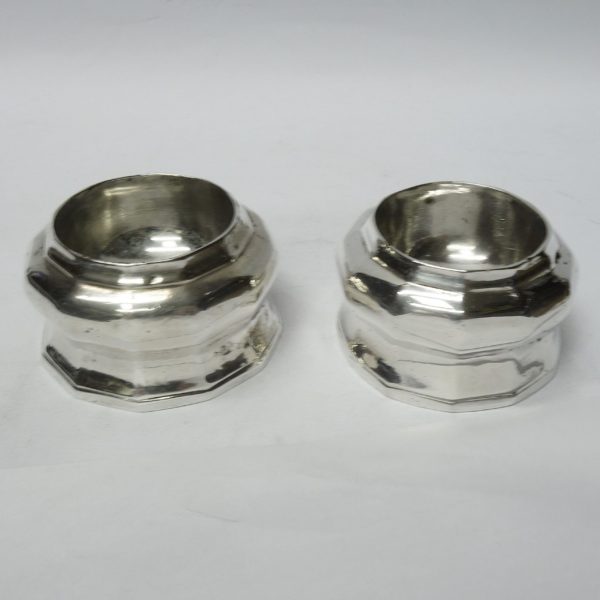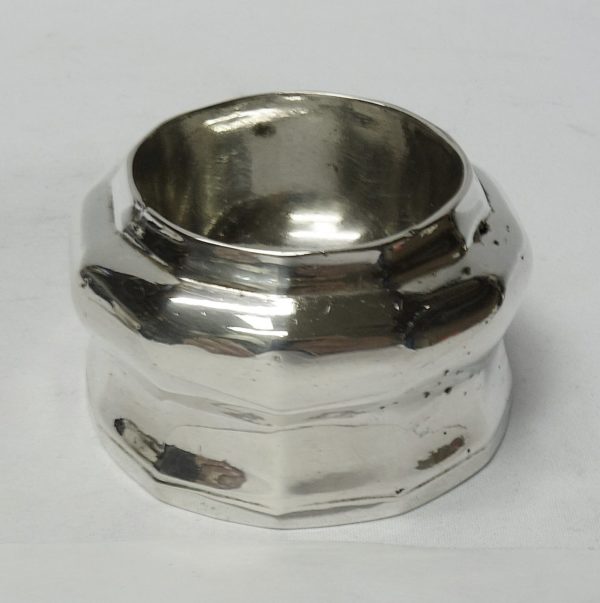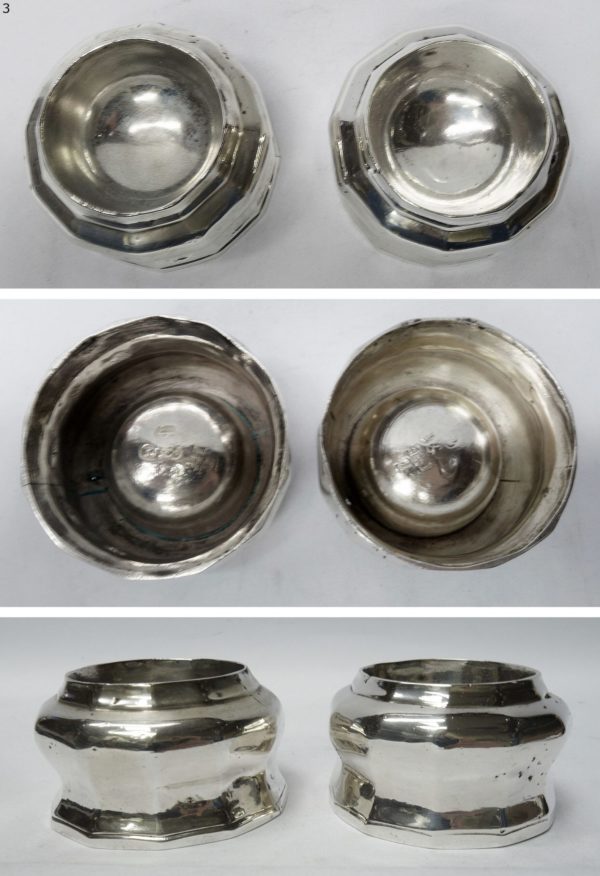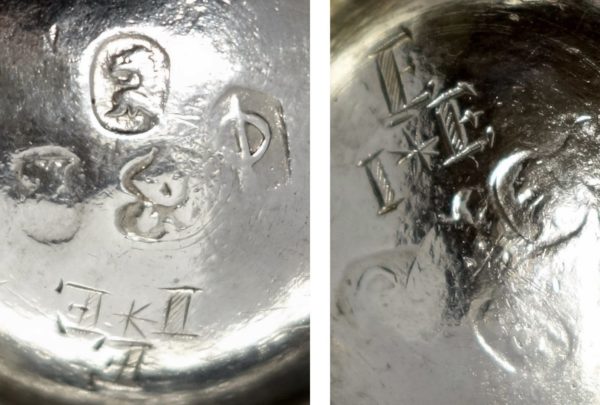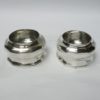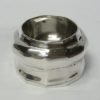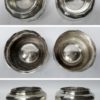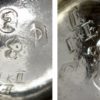Queen Anne Antique Silver Trencher Salts
SOLD
Stock: 9051
Date: 1709
Country: England
A handsome pair of early English silver trencher salts in a rare 12 sided version of the circular salt popular...
Description
Description
A handsome pair of early English silver trencher salts in a rare 12 sided version of the circular salt popular at the turn of the 1700’s. Britannia standard silver*.
Total weight 218 grams, 7 troy ounces.
Height 3.5 cms. Top 4.7 cms. Base 6.4 cms.
Owners initials engraved to the underside.
Marked underneath for London 1709.
Maker indistinct.
Marks. Stamped with full and matching English silver hallmarks; on one salt they are clear, on the other they are a bit indistinct. The makers mark cannot be made out.
*Britannia Standard silver. In 1696, so extensive had become the melting and clipping of coinage that the silversmiths were forbidden to use the sterling standard for their wares, but had to use a new higher standard, 95.8 per cent. New hallmarks were ordered, “the figure of a woman commonly called Britannia” and the lion’s head erased (torn off at the neck) replacing the lion passant and the leopard’s head crowned. This continued until the old standard of 92.5 per cent was restored in 1720. Britannia standard silver still continues to be produced even today.
Literature: The use of salt cellars is documented as early as classical Rome. During medieval times elaborate master salt cellars evolved which had not only a practical use but above all, a ceremonial importance, indicating the relative status of persons by their position at the table in relation to the large salt.
By 1600 the trencher salt was in use in England however these earliest examples are extremely rare and probably you won’t find a pair of trencher salts before 1690. These salts had no feet and were made in a wide range of shapes: round, oval rectangular, triangular or octagonal. The early trencher salts were often marked inside the bowl and are often badly worn through use and cleaning.
During the late 1730s the more traditional circular salt standing on 3 legs had mainly replaced the trencher salt. This shape remained popular until the late 18th century when the advent of the Industrial Revolution rendered both salt and salt cellars commonplace. From this time onwards silver salts were produced in a variety of forms, some with blue glass liners, and had become commonplace on the English dining table.
Salt shakers began to appear in the Victorian era, however there were problems with salt clumping. It was not until after 1911, when anti-caking agents began to be added to table salt, that salt shakers gained favour and open salts began to fall into disuse.
Condition
These chunky antique silver salts are in a good condition. Both are in good condition with signs of use, each has a tiny pin prick fault on the outside border. Good colour.
Maker Information
No maker assigned
Our Guarantee
Customer satisfaction is our primary concern
All silverware on our website is checked thoroughly prior to offering it for sale and every product listing contains a condition report and details of the silver hallmarks.
All items offered on our website include:
- Free Shipping Worldwide
- Tracked and Insured
- 14 day no quibble money back guarantee
- We are accredited members of LAPADA and conform to their strict professional standards
- We dispatch 1-3 days after receiving cleared payments
More detailed information about deliveries, returns and how to pay is available in the Help section at the bottom of this page.
